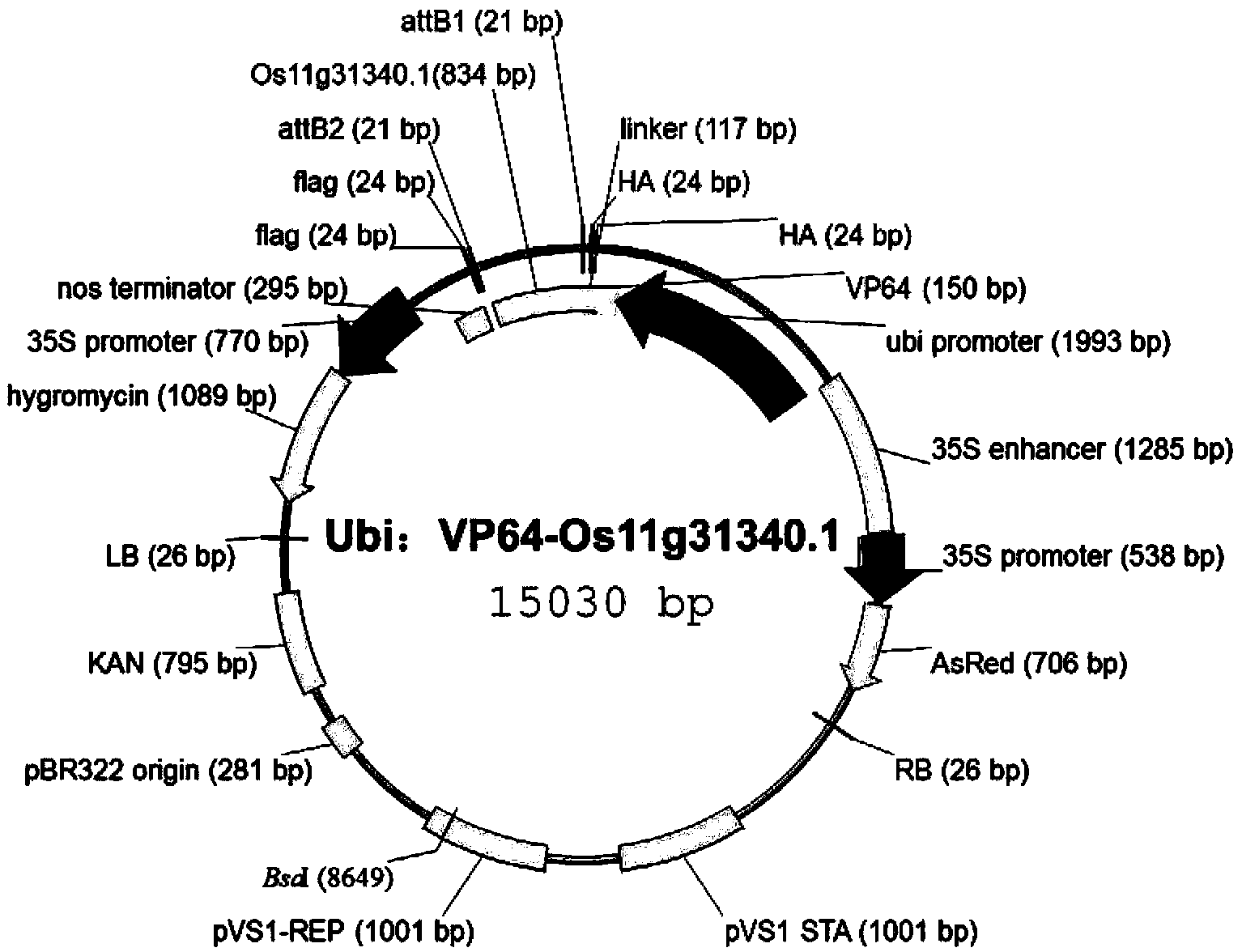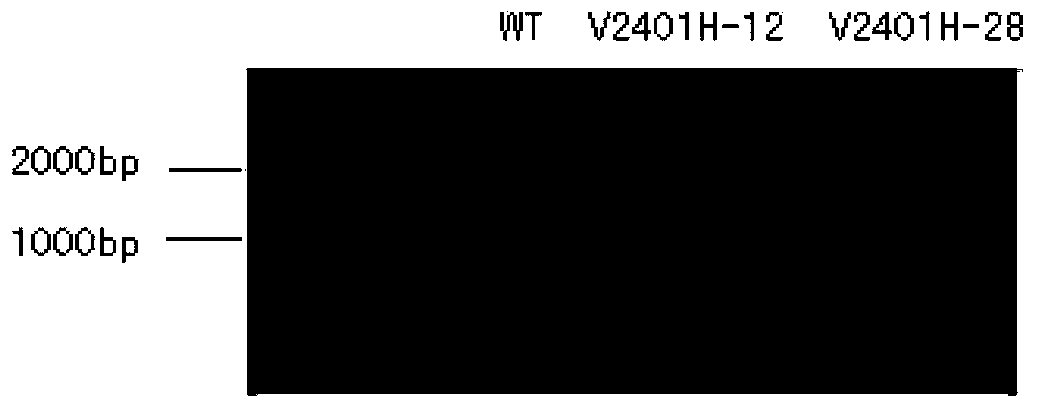Application of rice transcription factor Os11g31340.1 gene CDS (Coding Sequence)
A technology of rice transcription factor and transcription factor, which is applied in the field of genetic engineering, can solve the problems of weakening advantages of hybrid breeding and achieve the effect of improving rice grain traits and grain shape
- Summary
- Abstract
- Description
- Claims
- Application Information
AI Technical Summary
Problems solved by technology
Method used
Image
Examples
Embodiment 1
[0034] Example 1 Isolation of Os11g31340.1 Gene CDS Sequence and Plant Expression Vector Construction
[0035] Find the Os11g31340.1 gene in the plant transcription factor database (http: / / rice.plantbiology.msu.edu / analyses_search_locus.shtml), design PCR amplification primers according to its CDS sequence, and design PCR amplification primers according to its sequence (F: 5′-CAAAAAAGCAGGCTTC ATGGCCAGCCCTGGAGT-3′ and reverse primer R: 5′-CAAGAAAGCTGGGTCGTTCATGCCATGGCCATAAC-3′).
[0036] The CDS sequence of the Os11g31340.1 gene was obtained by PCR using the total cDNA of wild-type Nipponbare rice as a template, and its nucleotide sequence is shown in SEQ ID No.1.
[0037] 2. Construction of plant expression vectors
[0038] The CDS sequence of the rice transcription factor Os11g31340.1 gene was constructed downstream of the four transcription factor activation motif VP16 coding genes (SEQ ID No.4) through the Gateway system.
[0039] 2.1 Cloning the above PCR product into th...
Embodiment 2
[0049] The acquisition of embodiment 2 transgenic rice plants
[0050] Take the mature seeds of rice 'kitaake', shell them manually or mechanically, select the plump, smooth and spot-free seeds and inoculate them on the induction medium for induction culture after being sterilized. Rice callus with good appearance and good growth was selected as the recipient material, and ubi: VP64-Os11g31340.1 was transferred into the rice callus by the Agrobacterium-mediated method, with 100 μM acetosyringone and O.D. 0.7 AAM culture solution of Agrobacterium. For transformation, the callus soaked in the transformation solution was placed on a co-culture medium for co-cultivation, cultured in the dark at 25°C for 3 days, then placed on a screening medium for about 30 days, and subcultured every 10 days. Then, the screened out resistant calli were transferred to the differentiation medium for differentiation for about 20 days, and subcultured every 10 days. The resistant callus that differ...
Embodiment 3
[0056] Identification of embodiment 3 transgenic positive strains
[0057] In order to detect the overexpression of ubi:VP64-Os11g31340.1 gene in T2 transgenic rice, primers were designed on the vector (forward primer: 5'-GTGGGGACAAGTTTGTACAAAAAAGCAGGCTTC-3' and reverse primer: 5'-GTGGGGACCACTTTGTACAAGAAAGCTGGGTC-3' ) for PCR detection and obtained obvious specific bands, in which WT is wild-type rice 'kitaake', V2401H-12 and V2401H-28 are VP64-Os11g31340.1 transgenic rice lines ( image 3 ). The above primers are designed at the junction of the vector and the target gene, image 3 It shows that the size of the amplified fragment is basically the same as that of the target gene (834bp).
PUM
 Login to View More
Login to View More Abstract
Description
Claims
Application Information
 Login to View More
Login to View More - R&D Engineer
- R&D Manager
- IP Professional
- Industry Leading Data Capabilities
- Powerful AI technology
- Patent DNA Extraction
Browse by: Latest US Patents, China's latest patents, Technical Efficacy Thesaurus, Application Domain, Technology Topic, Popular Technical Reports.
© 2024 PatSnap. All rights reserved.Legal|Privacy policy|Modern Slavery Act Transparency Statement|Sitemap|About US| Contact US: help@patsnap.com










